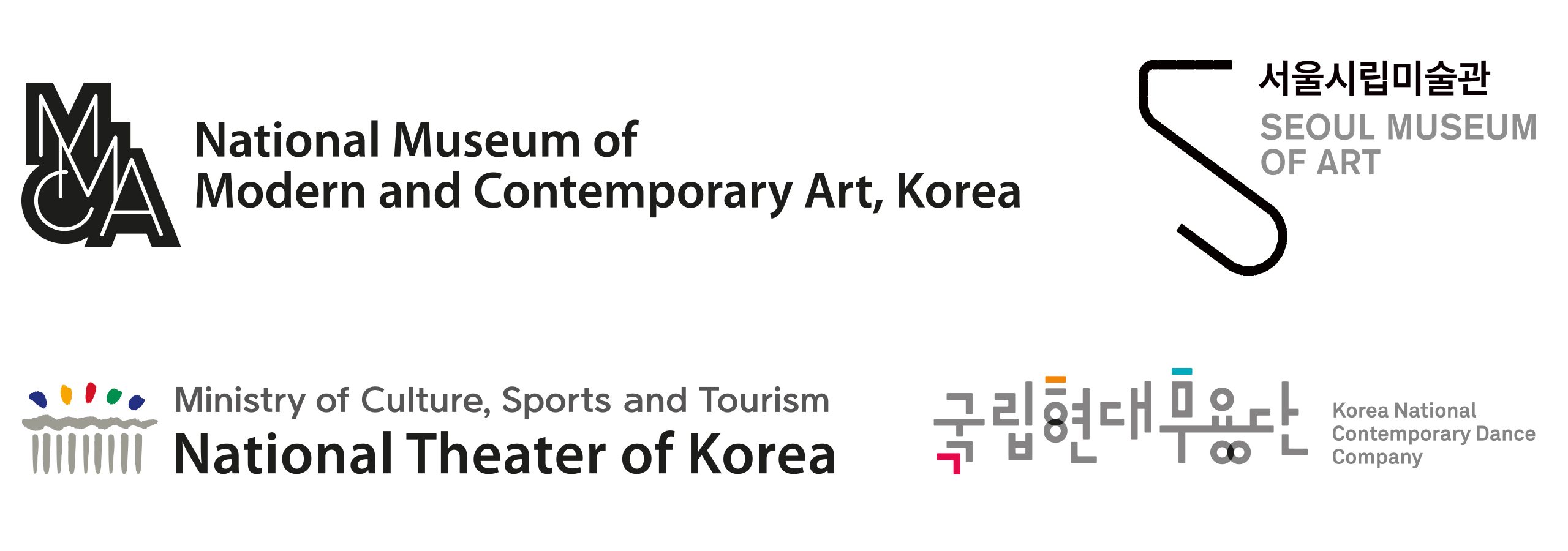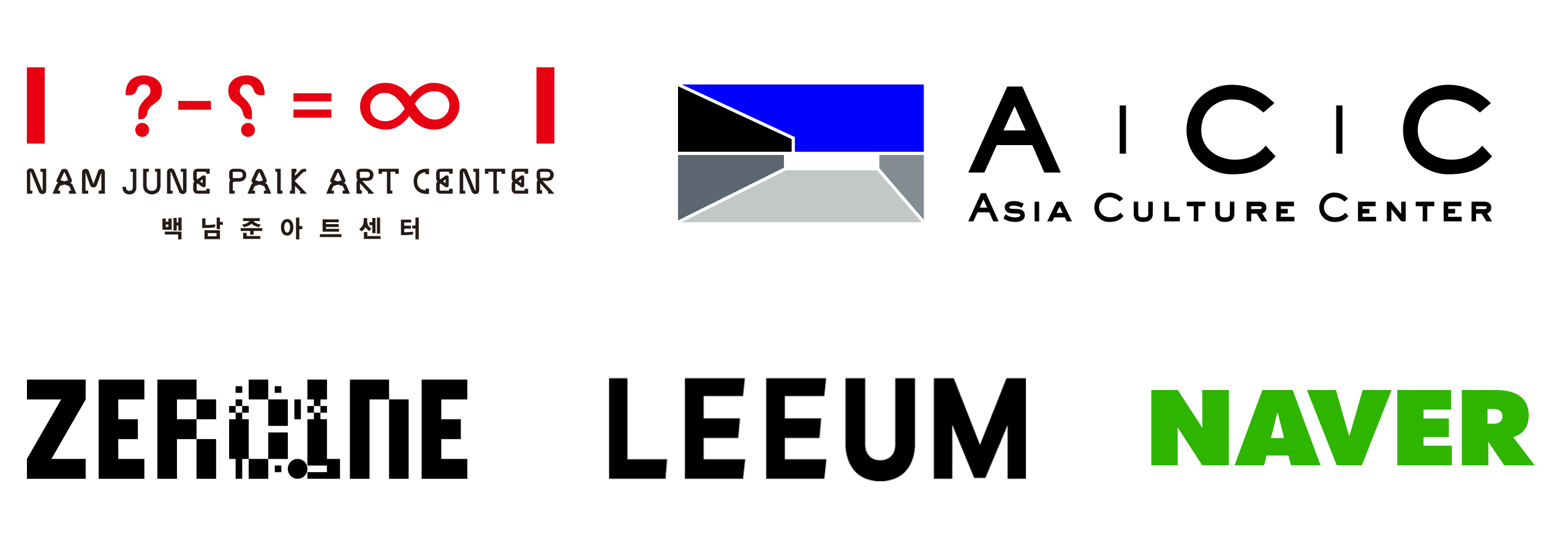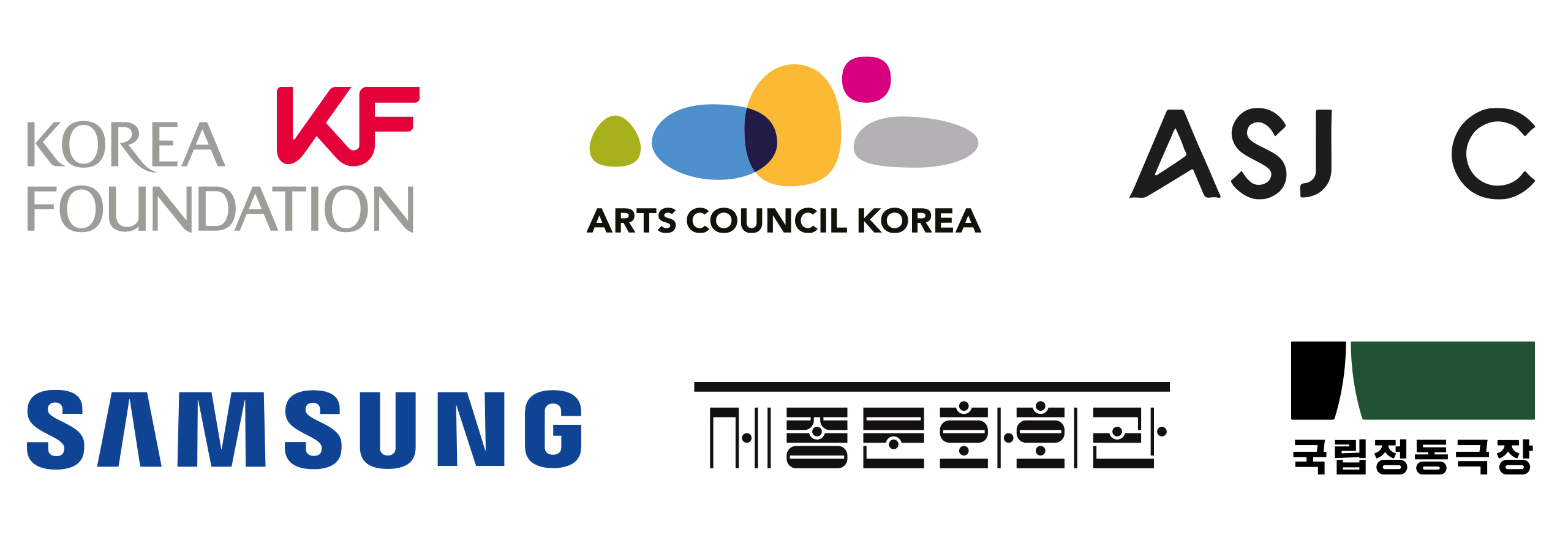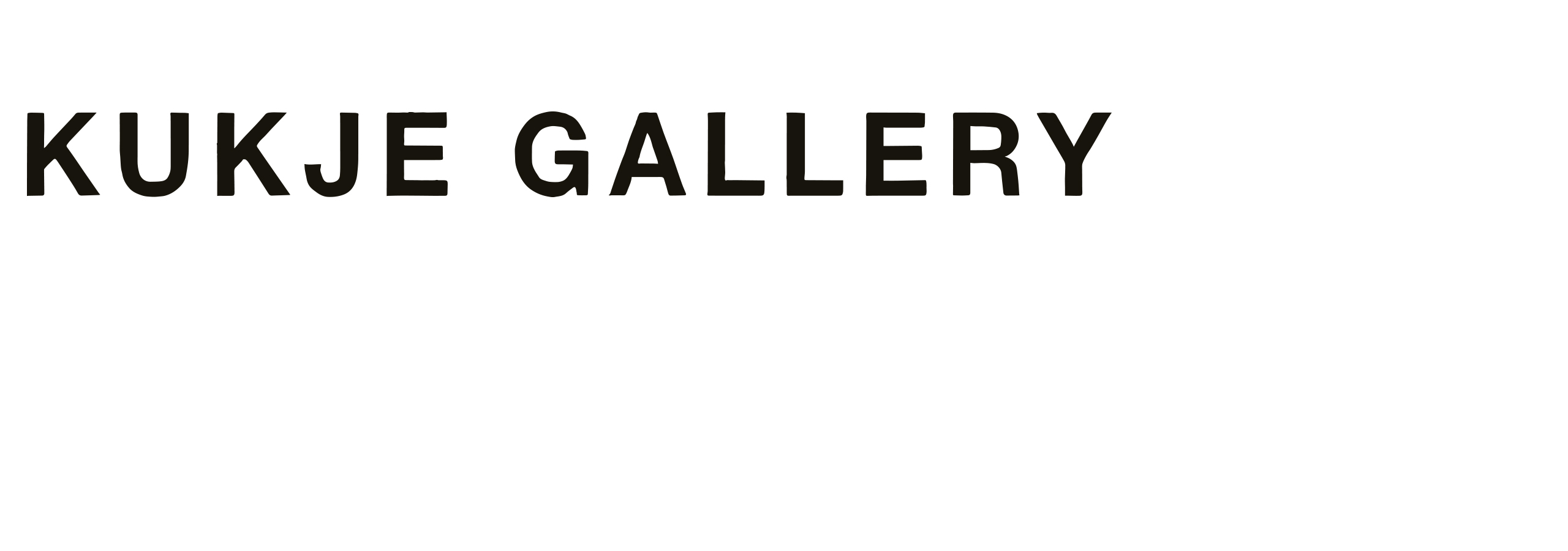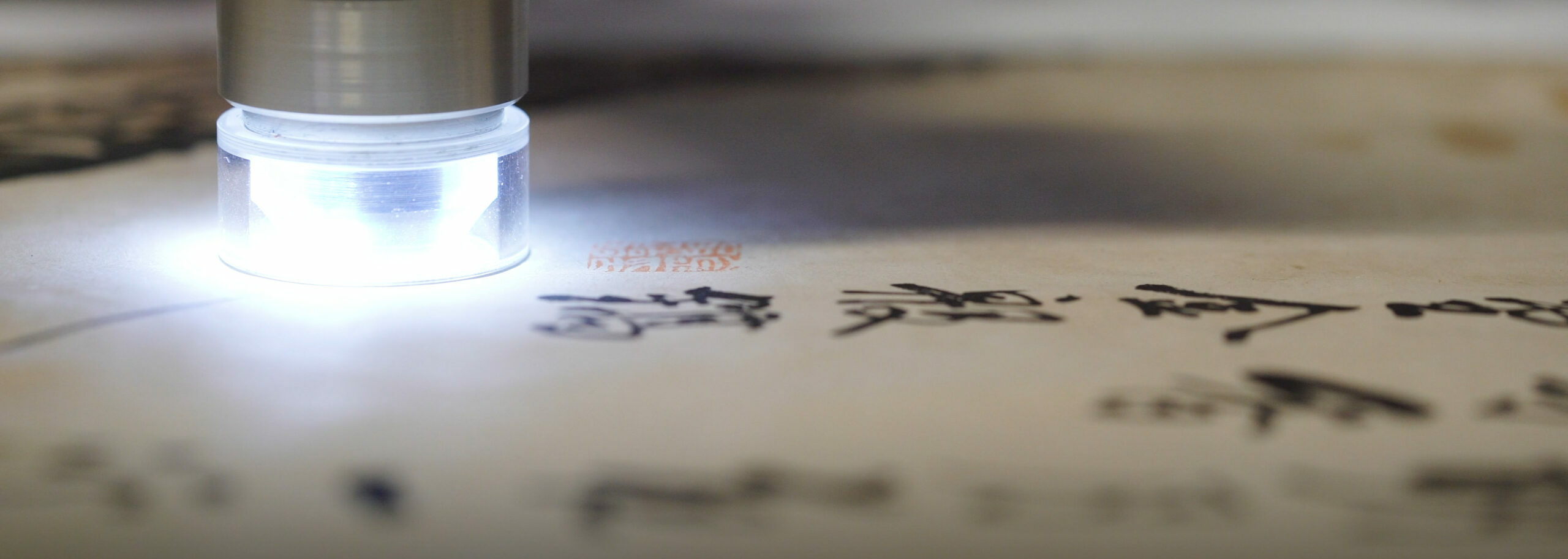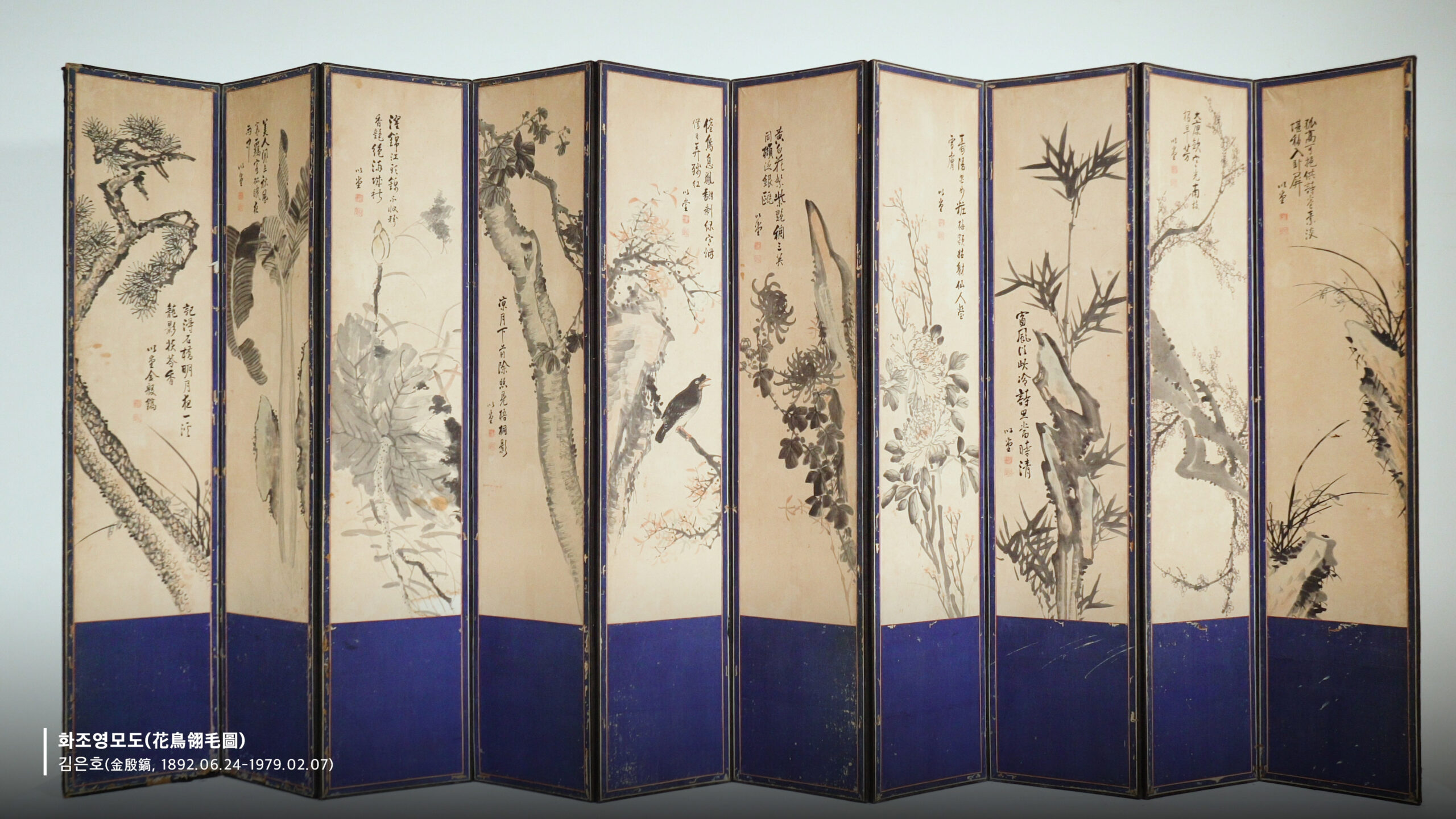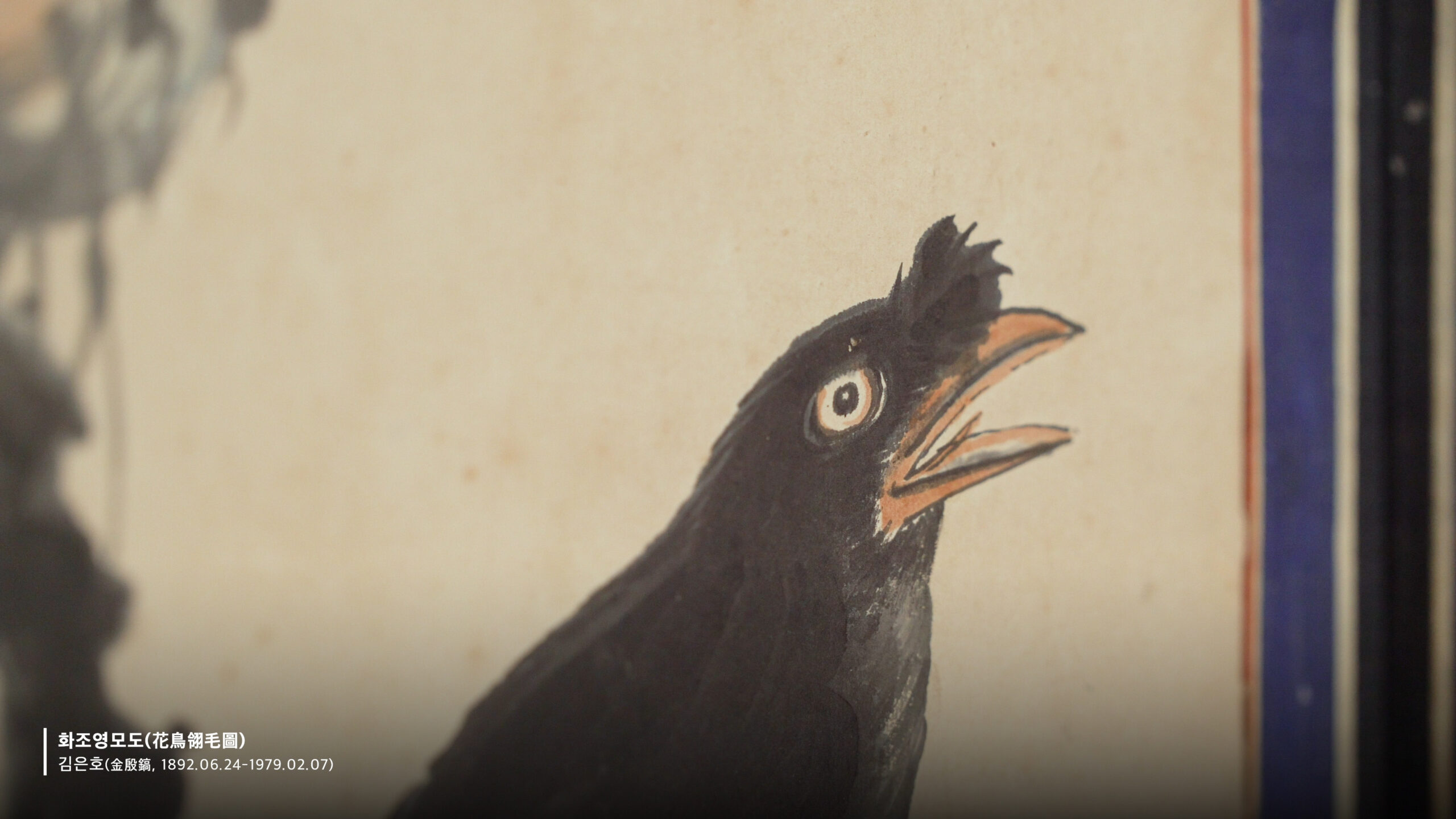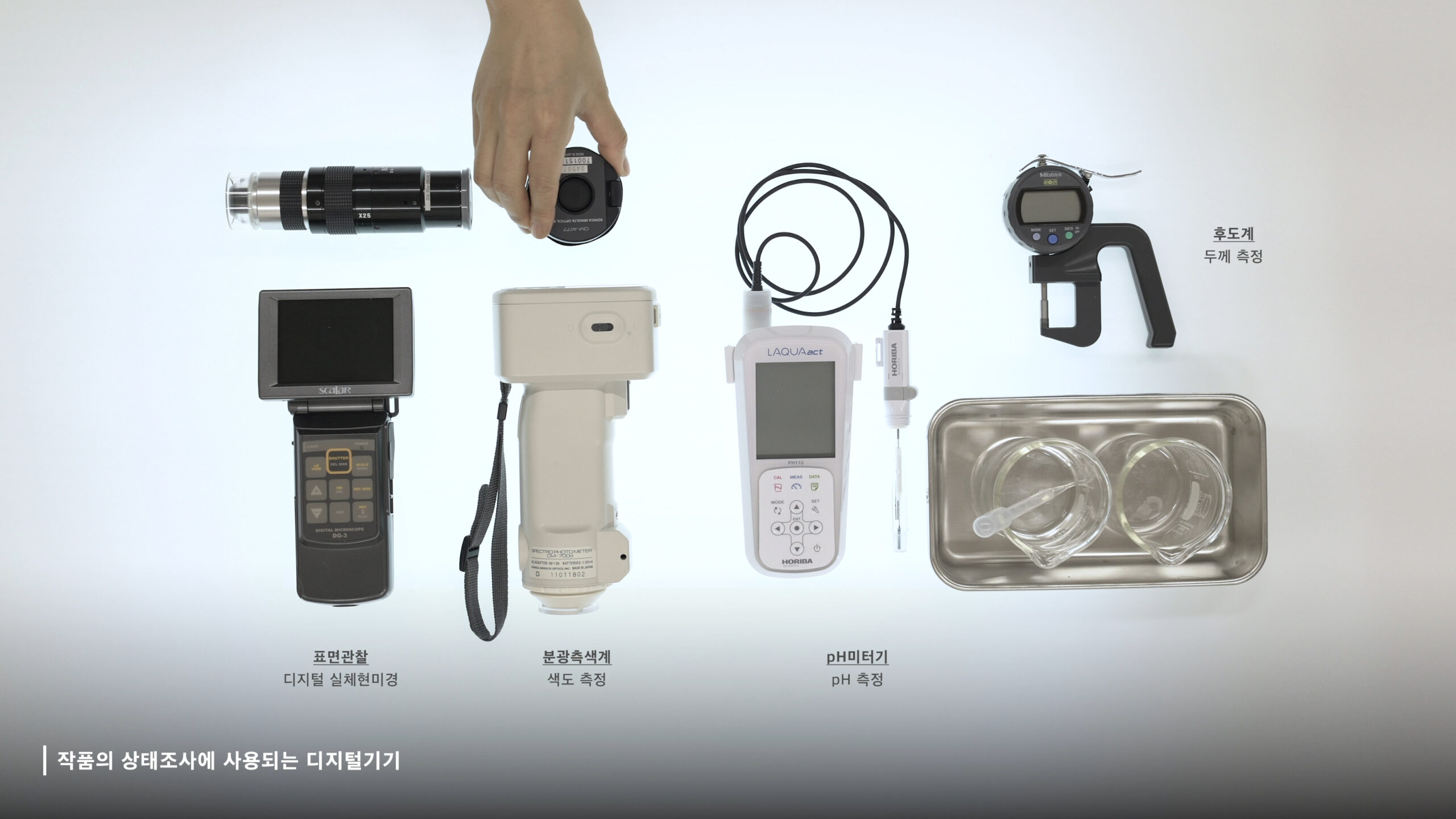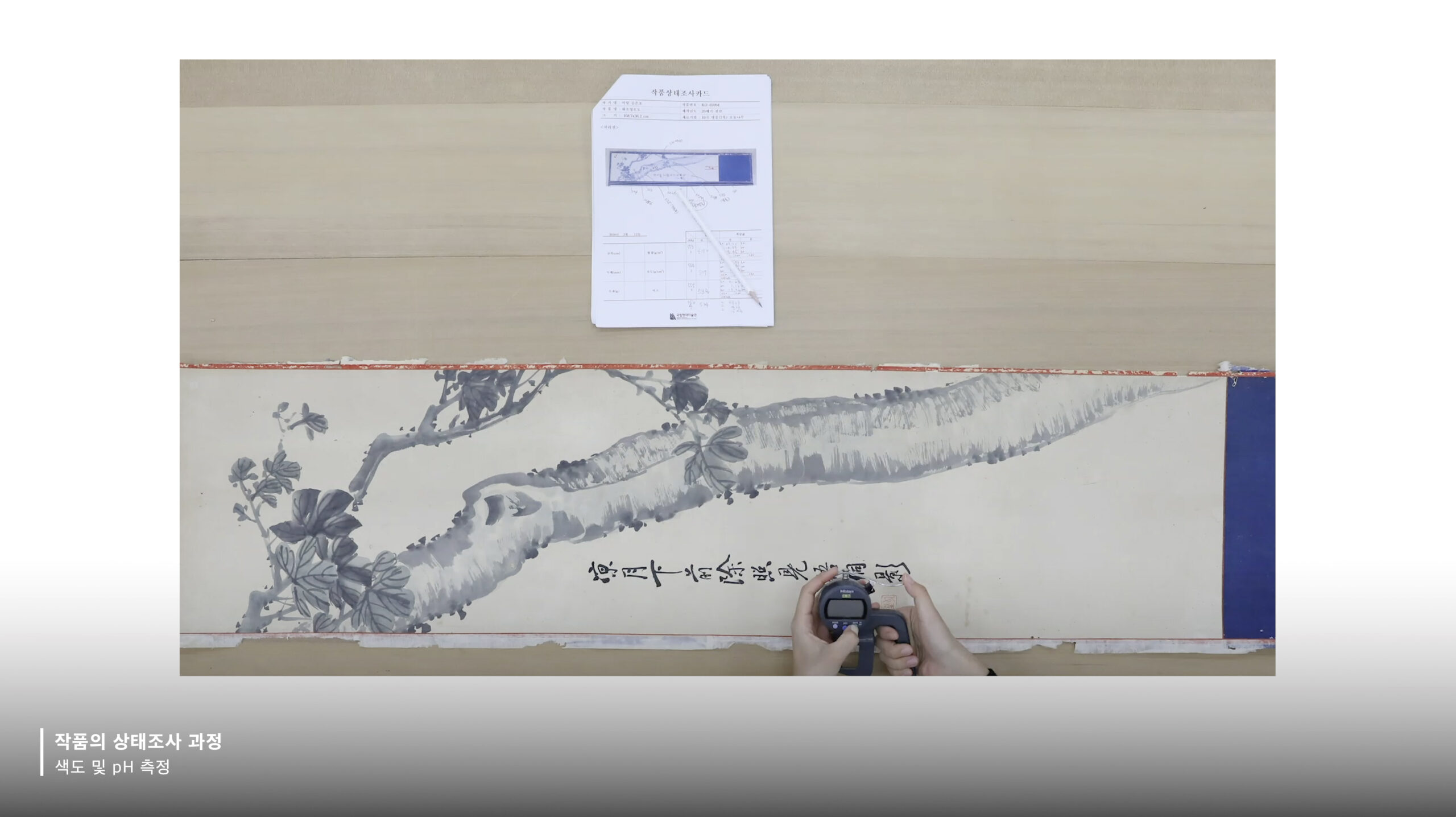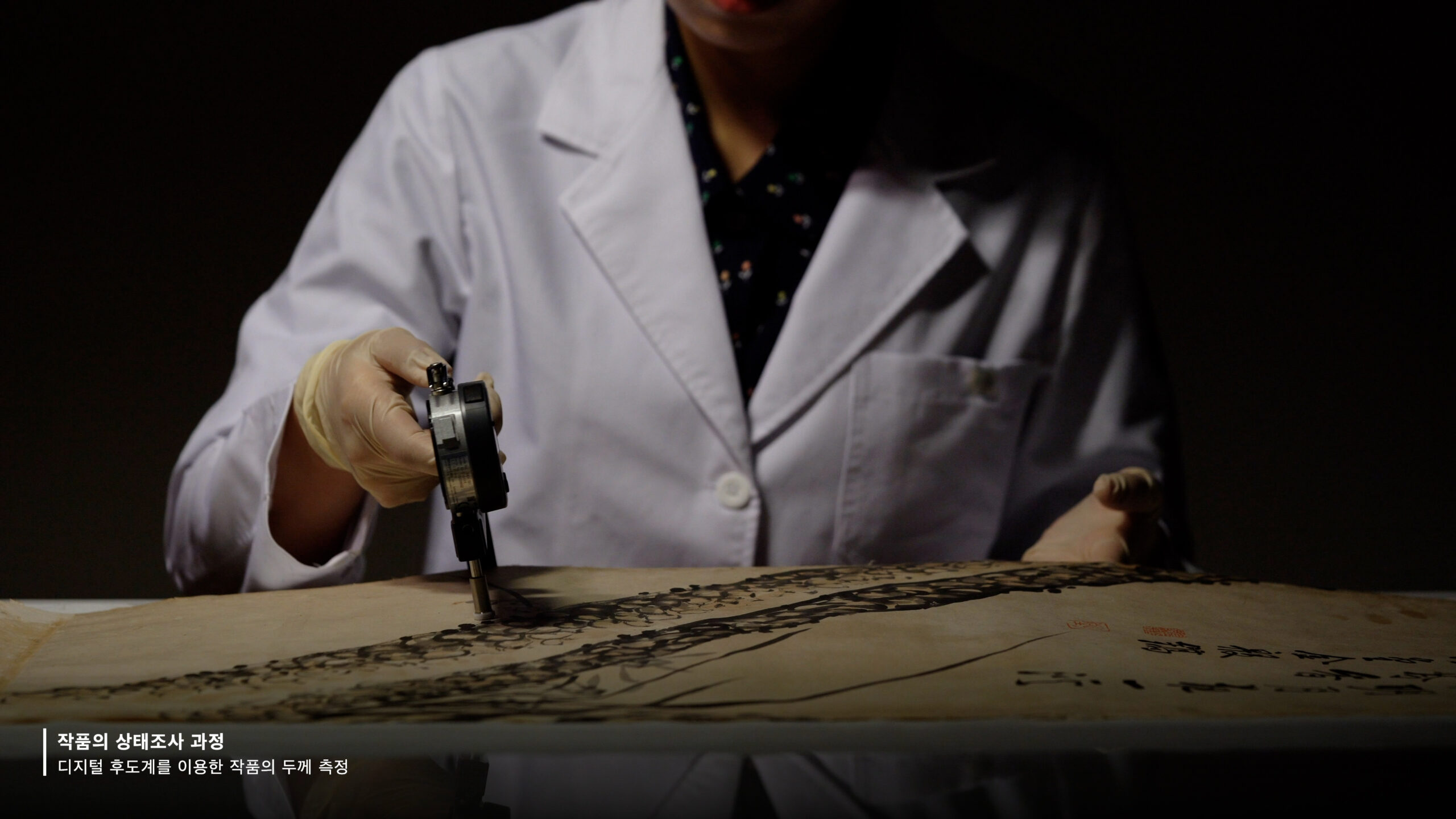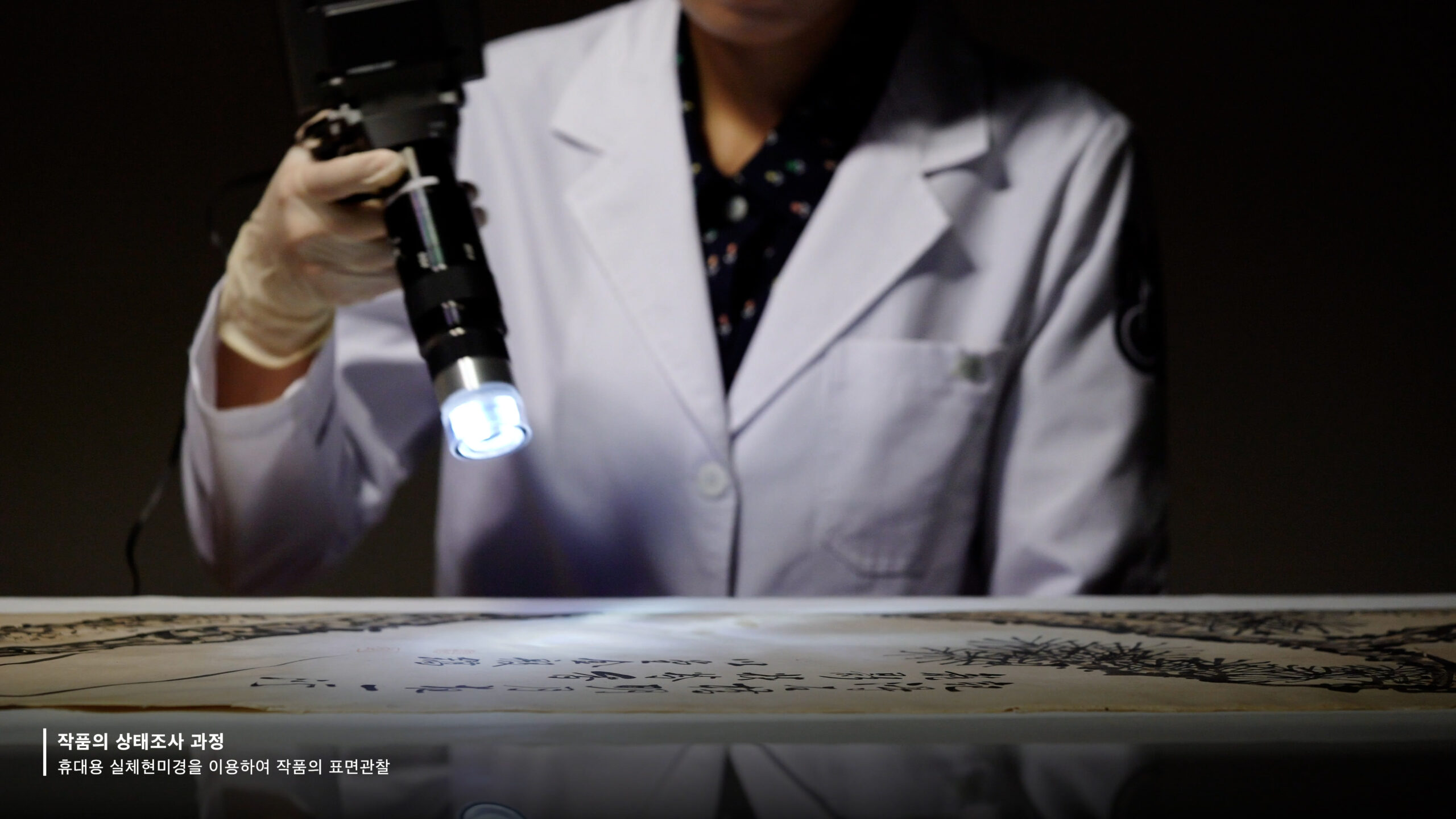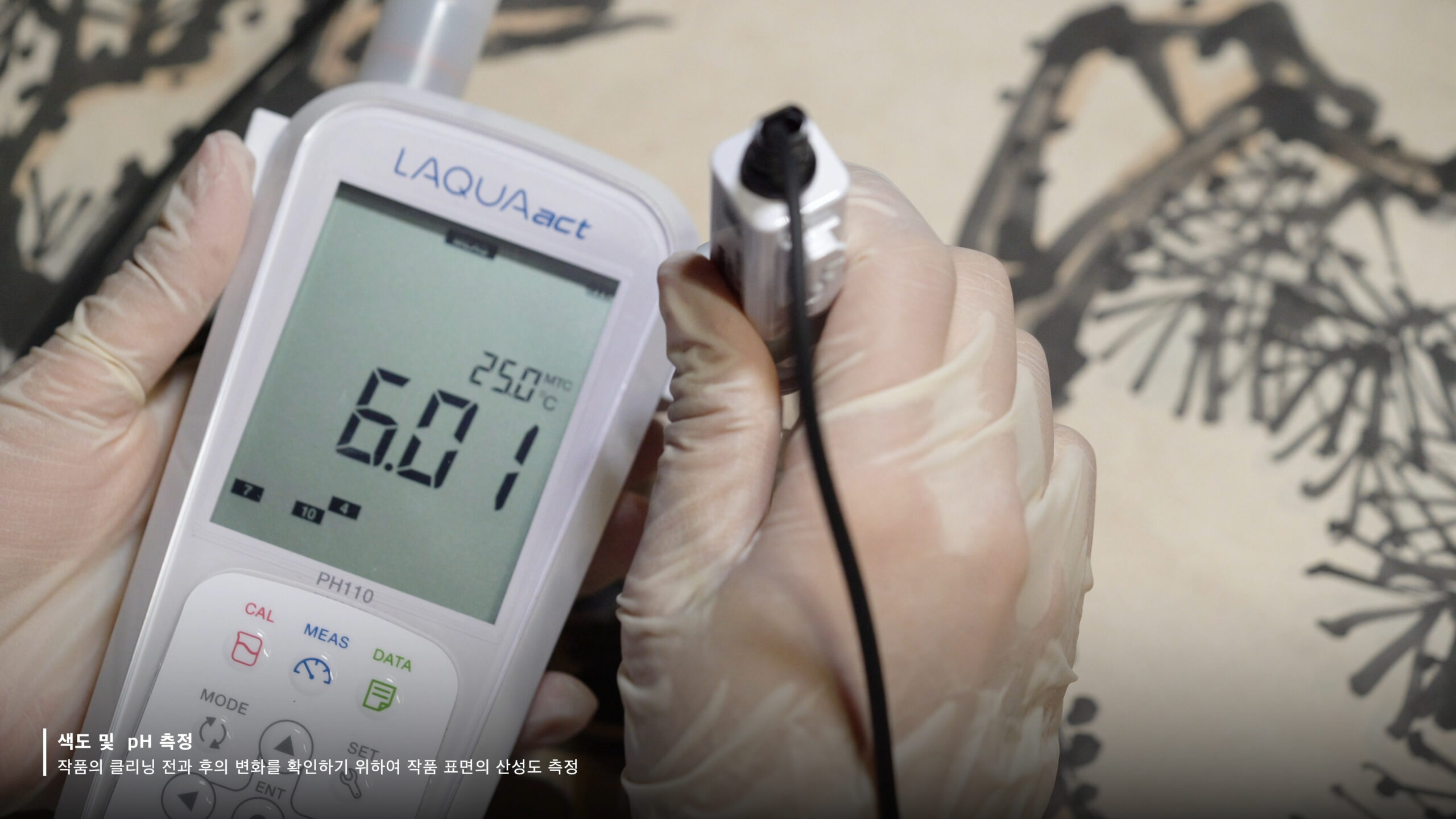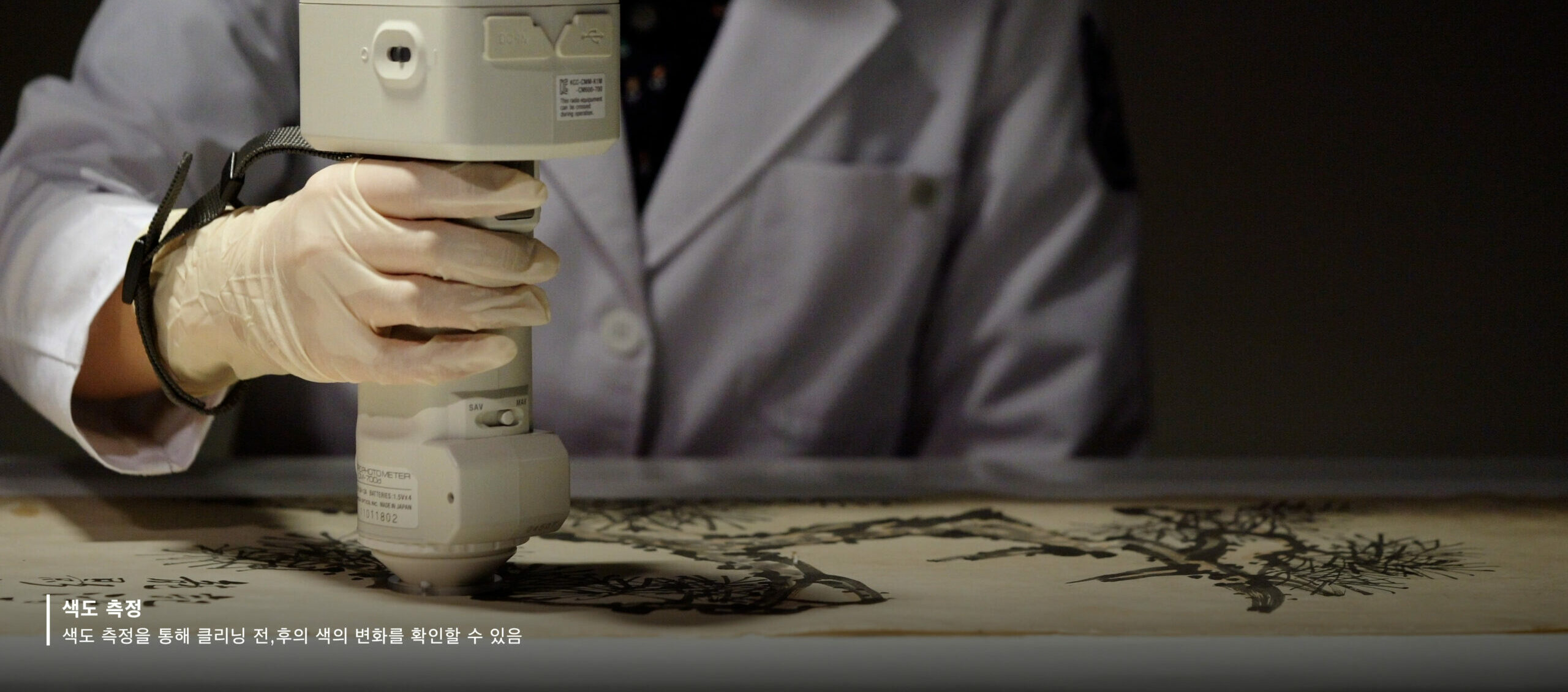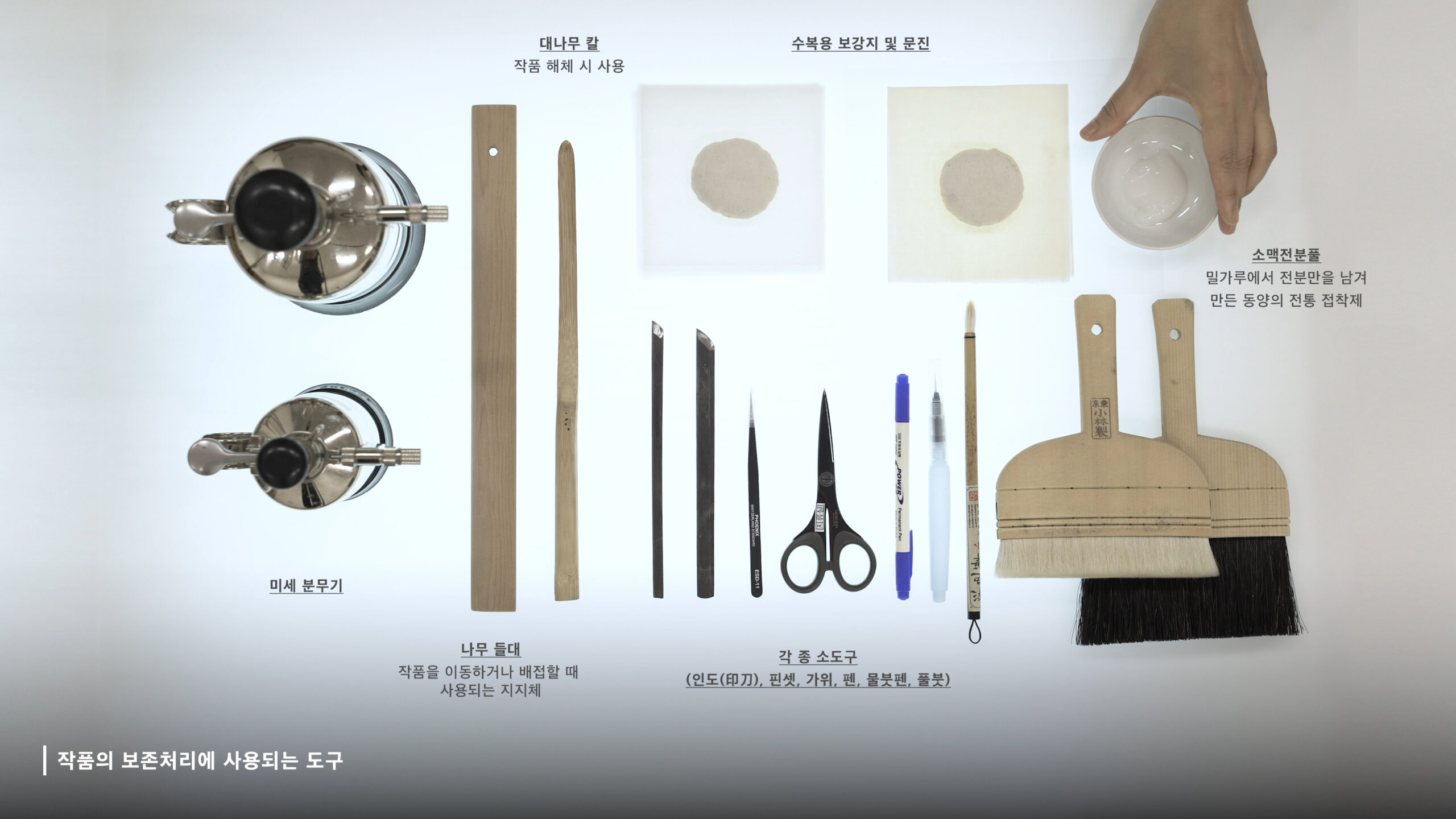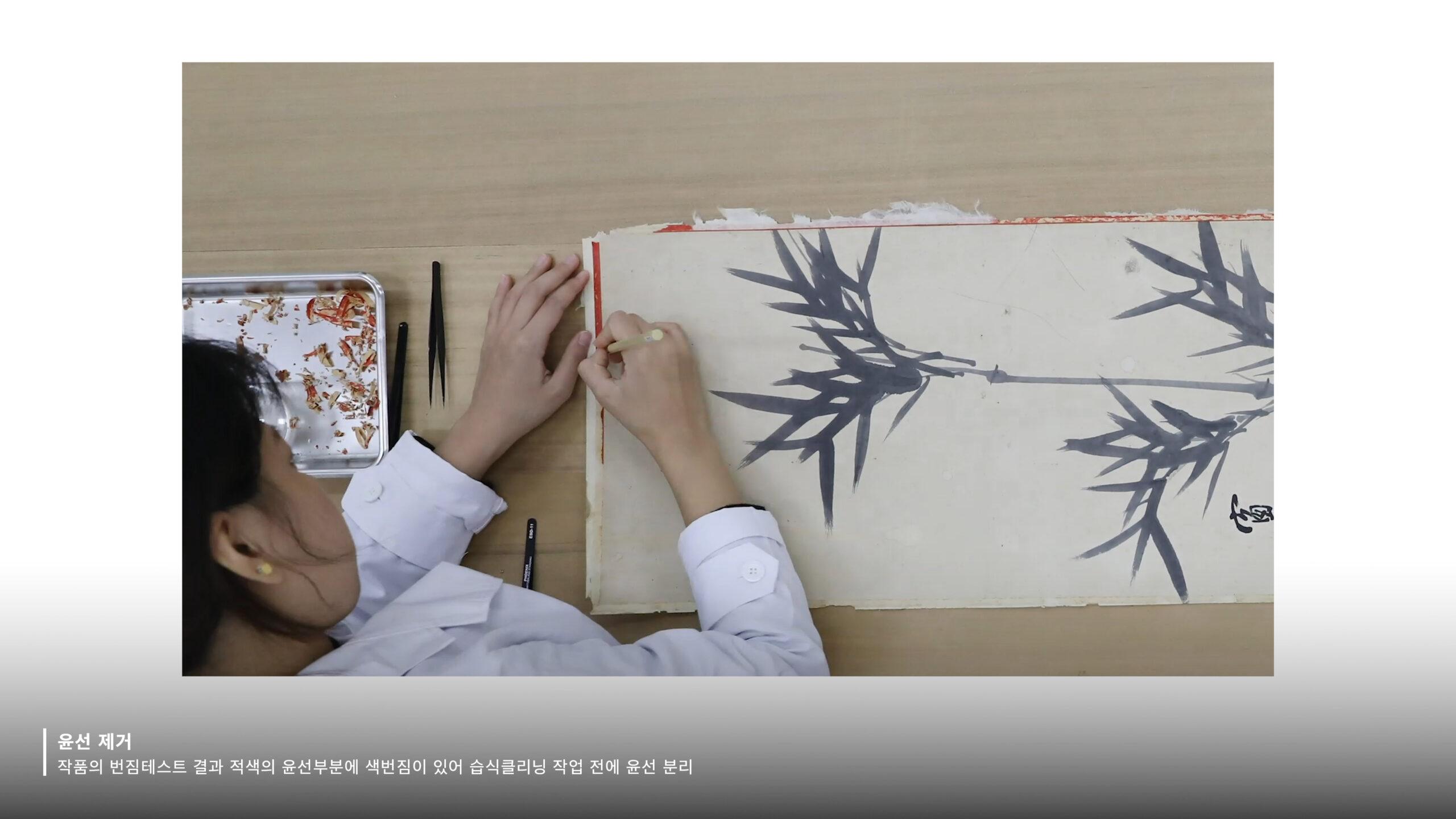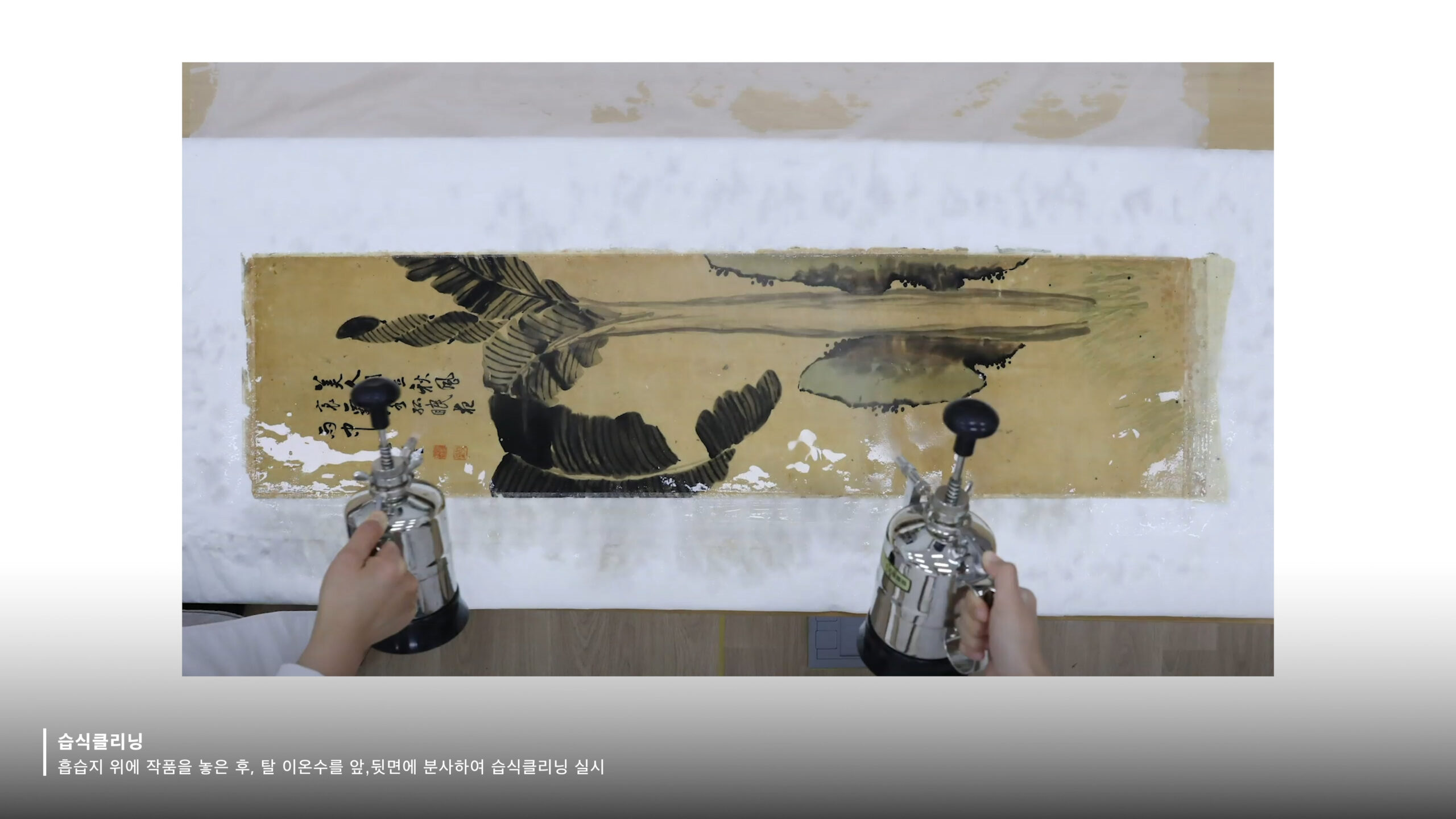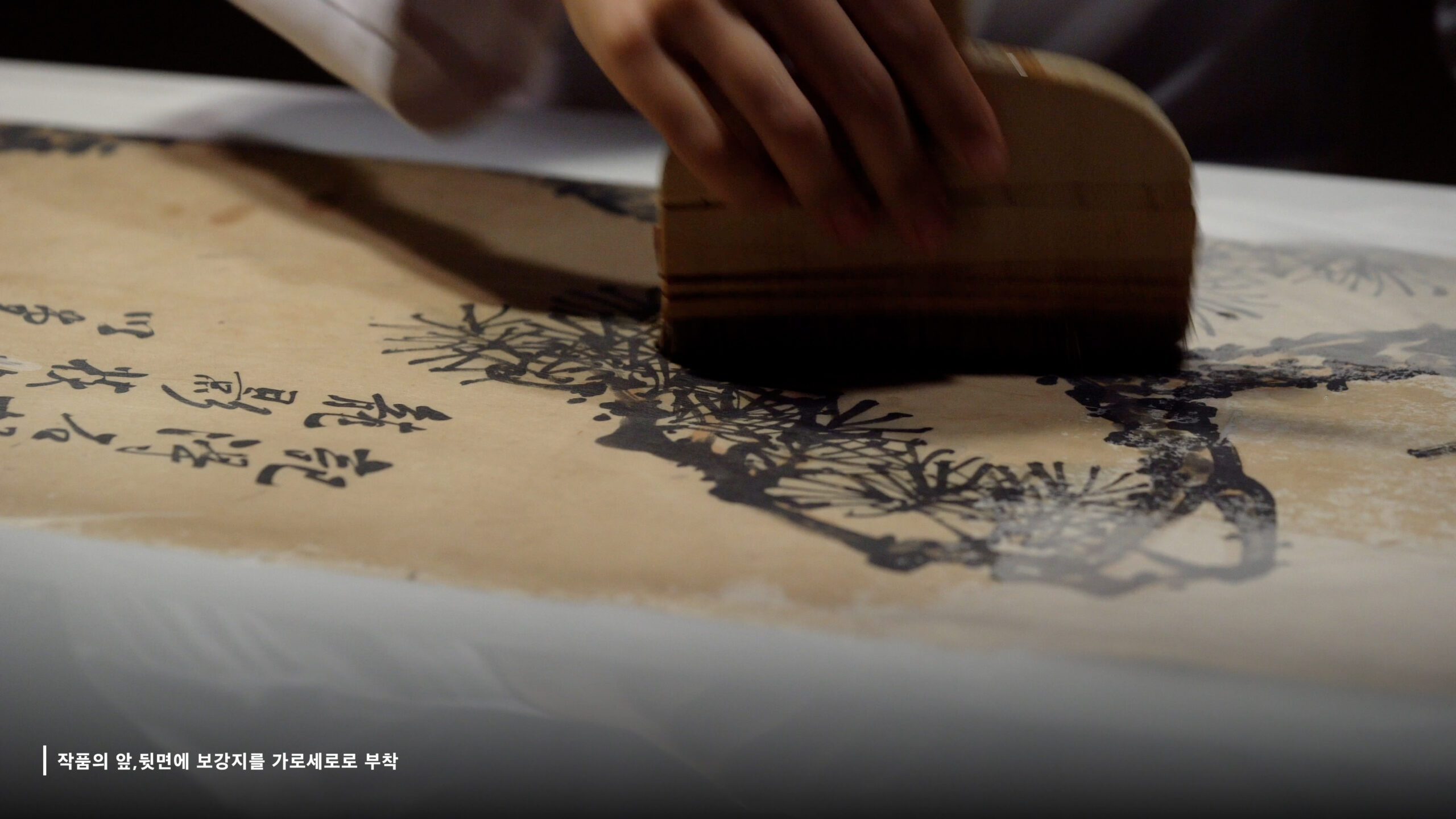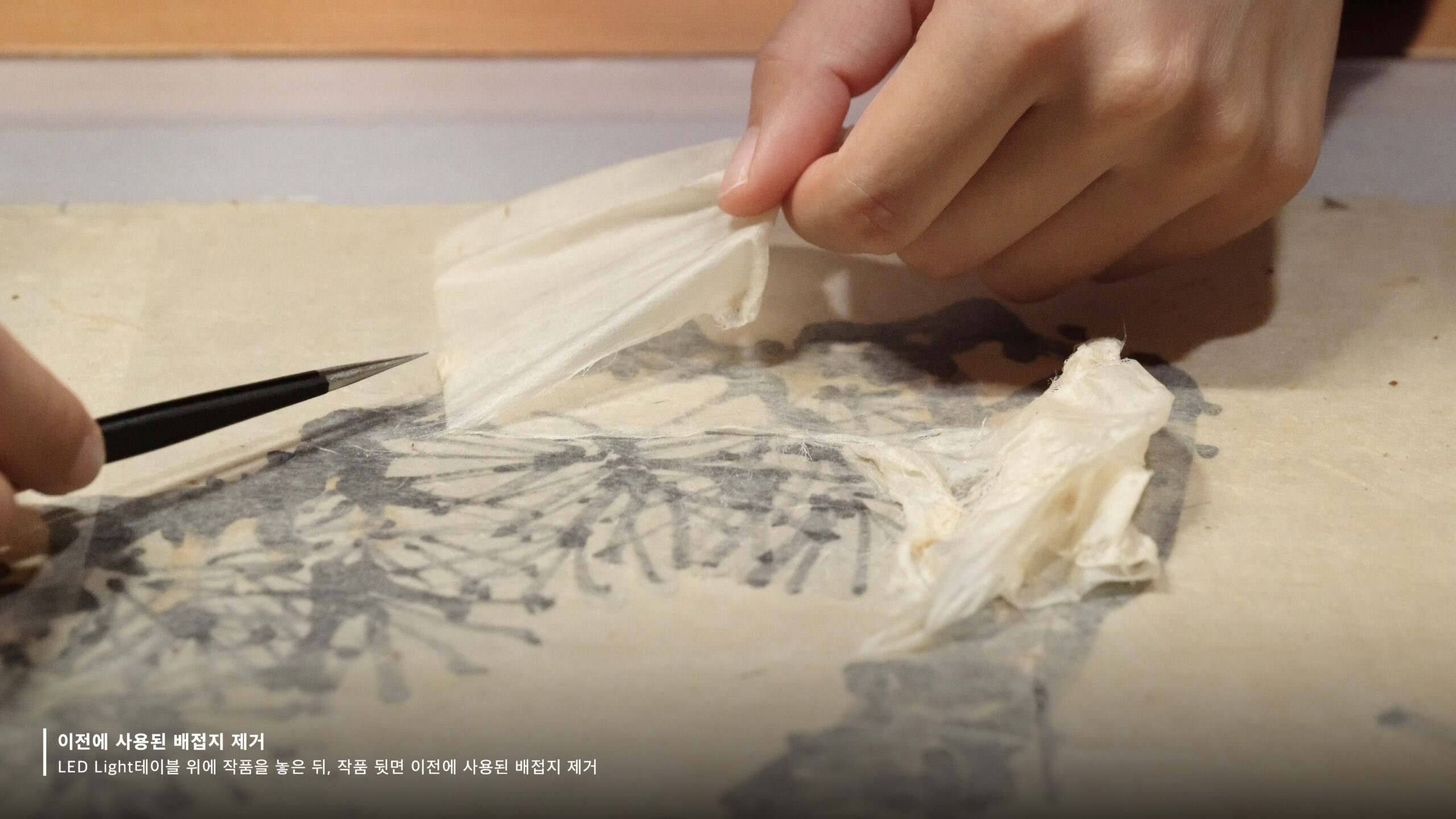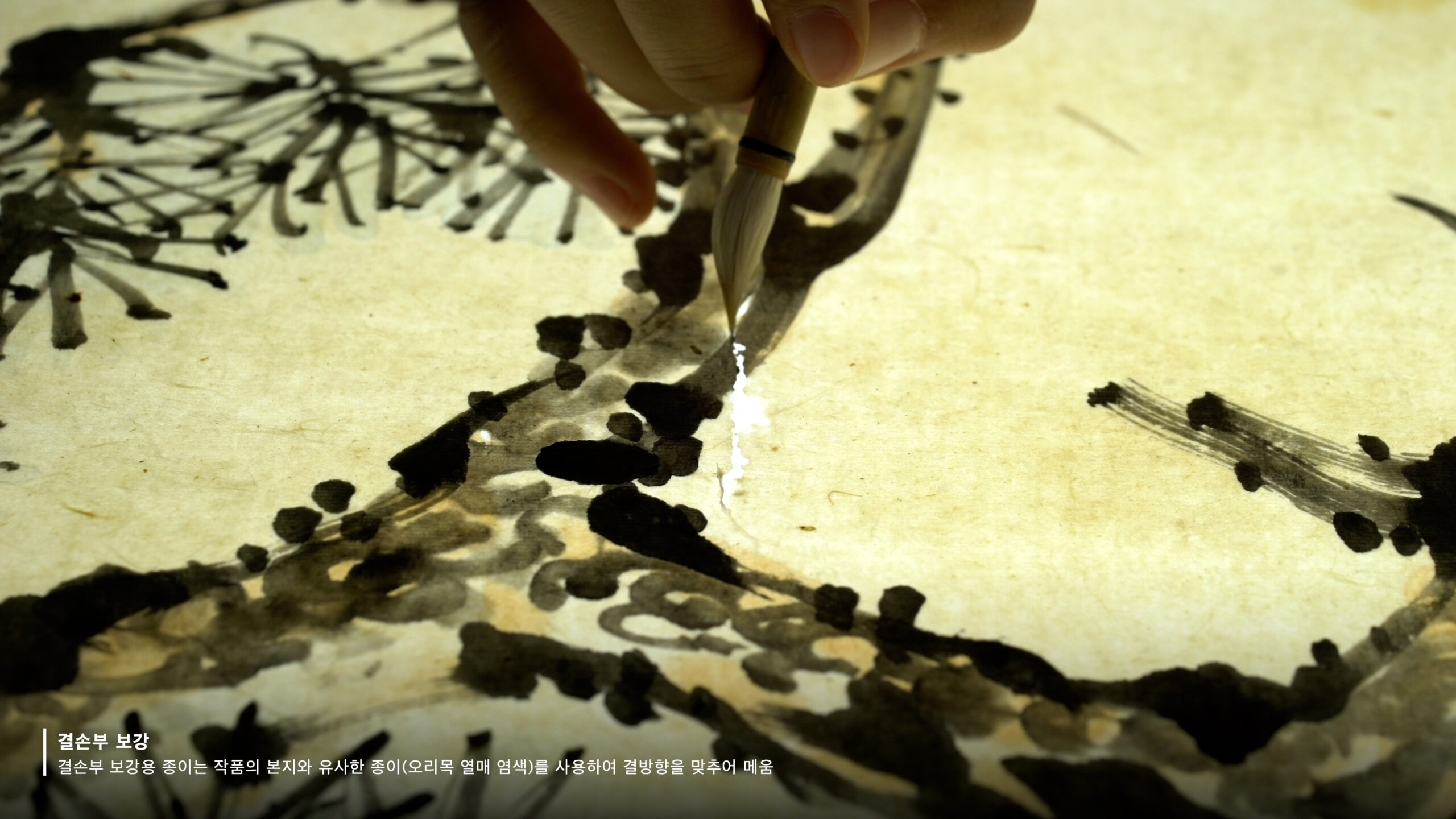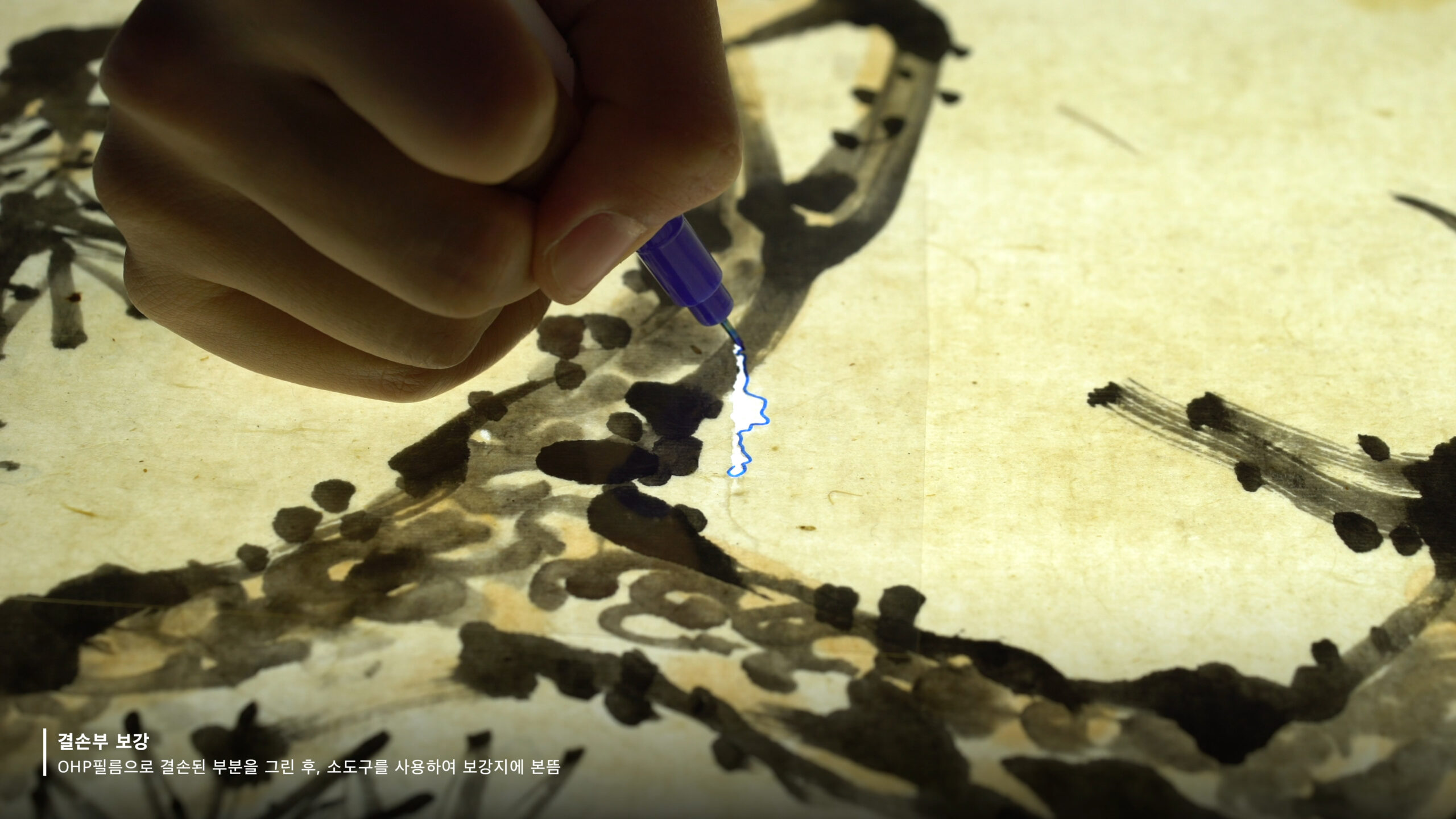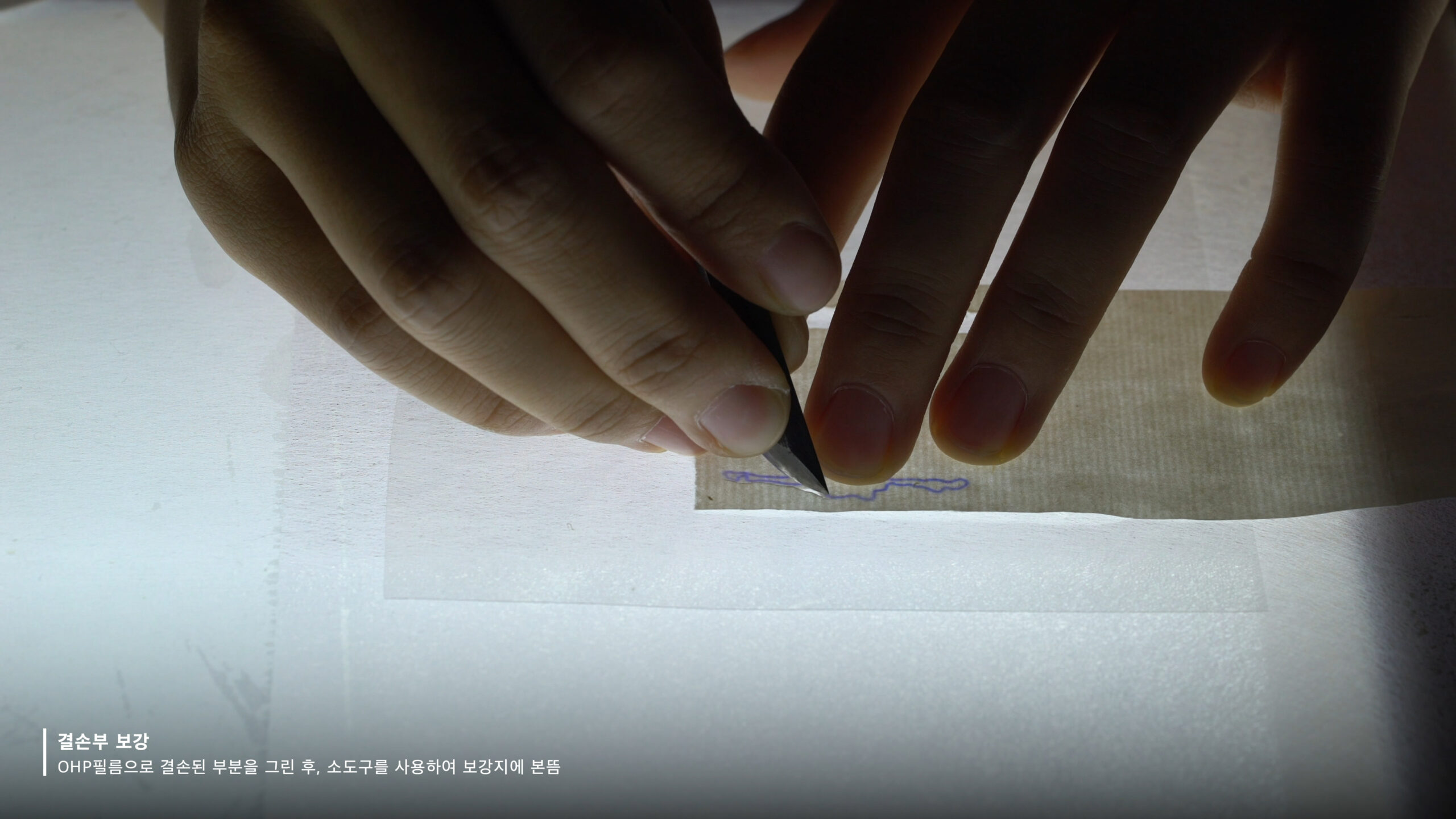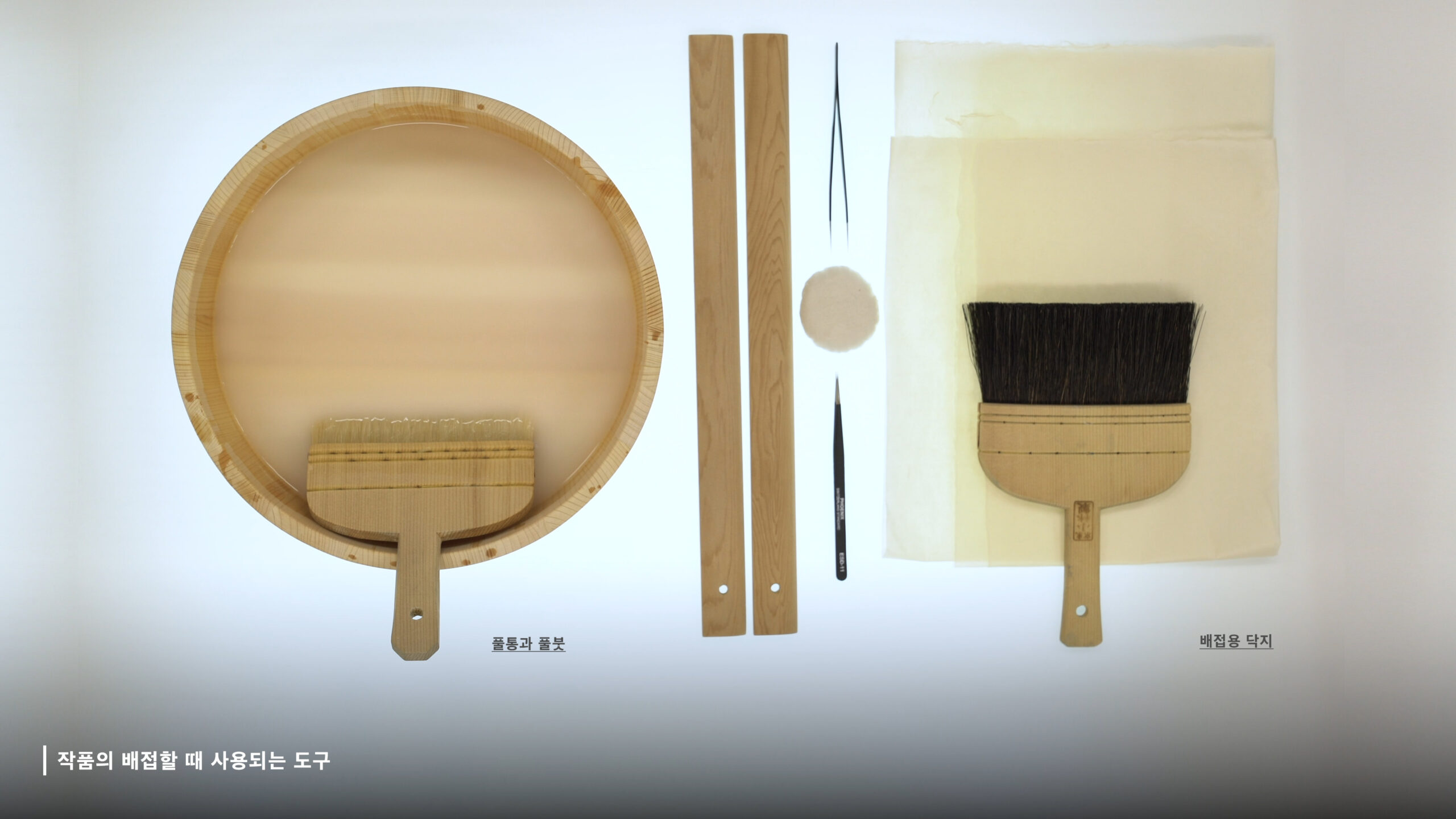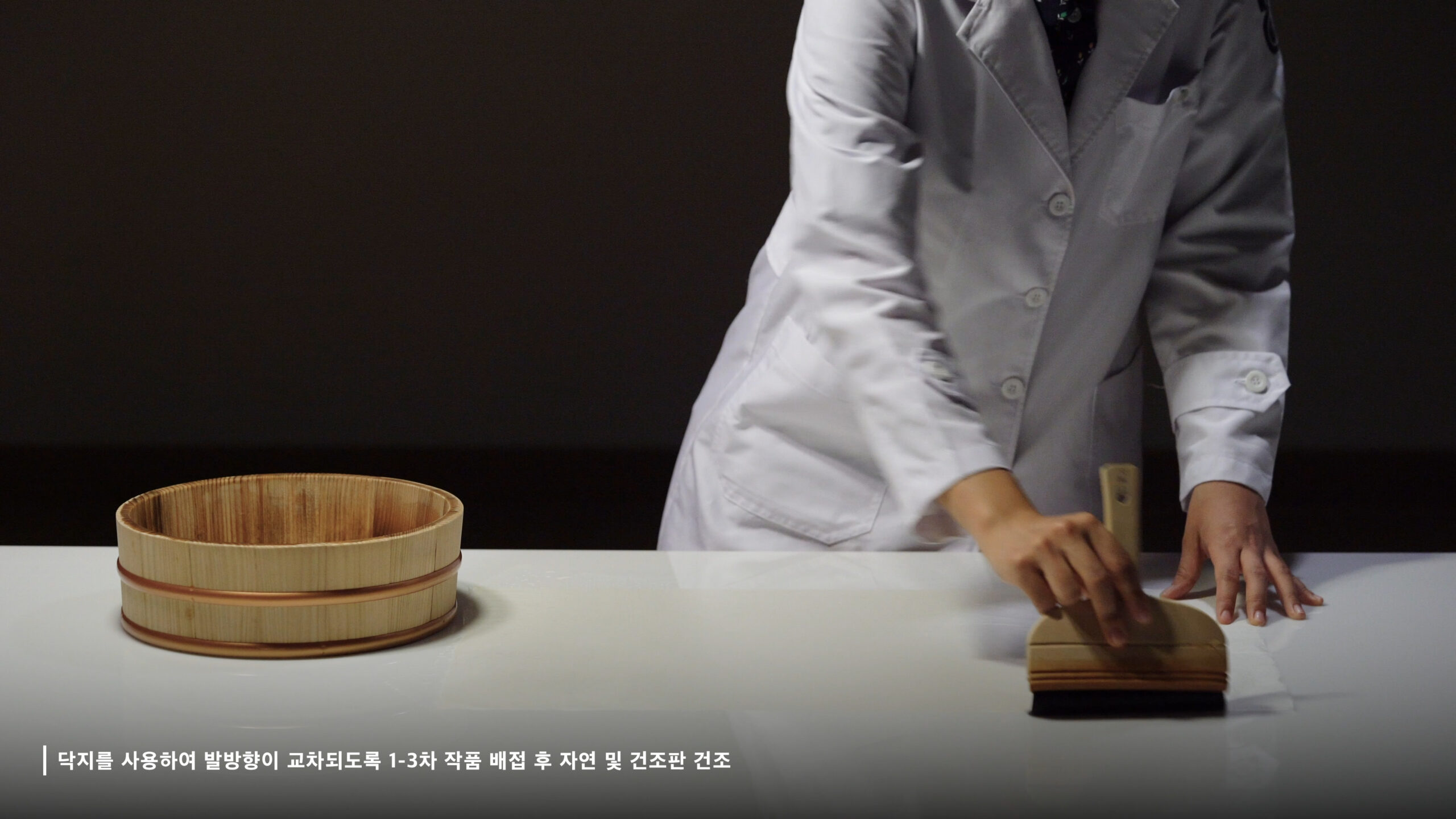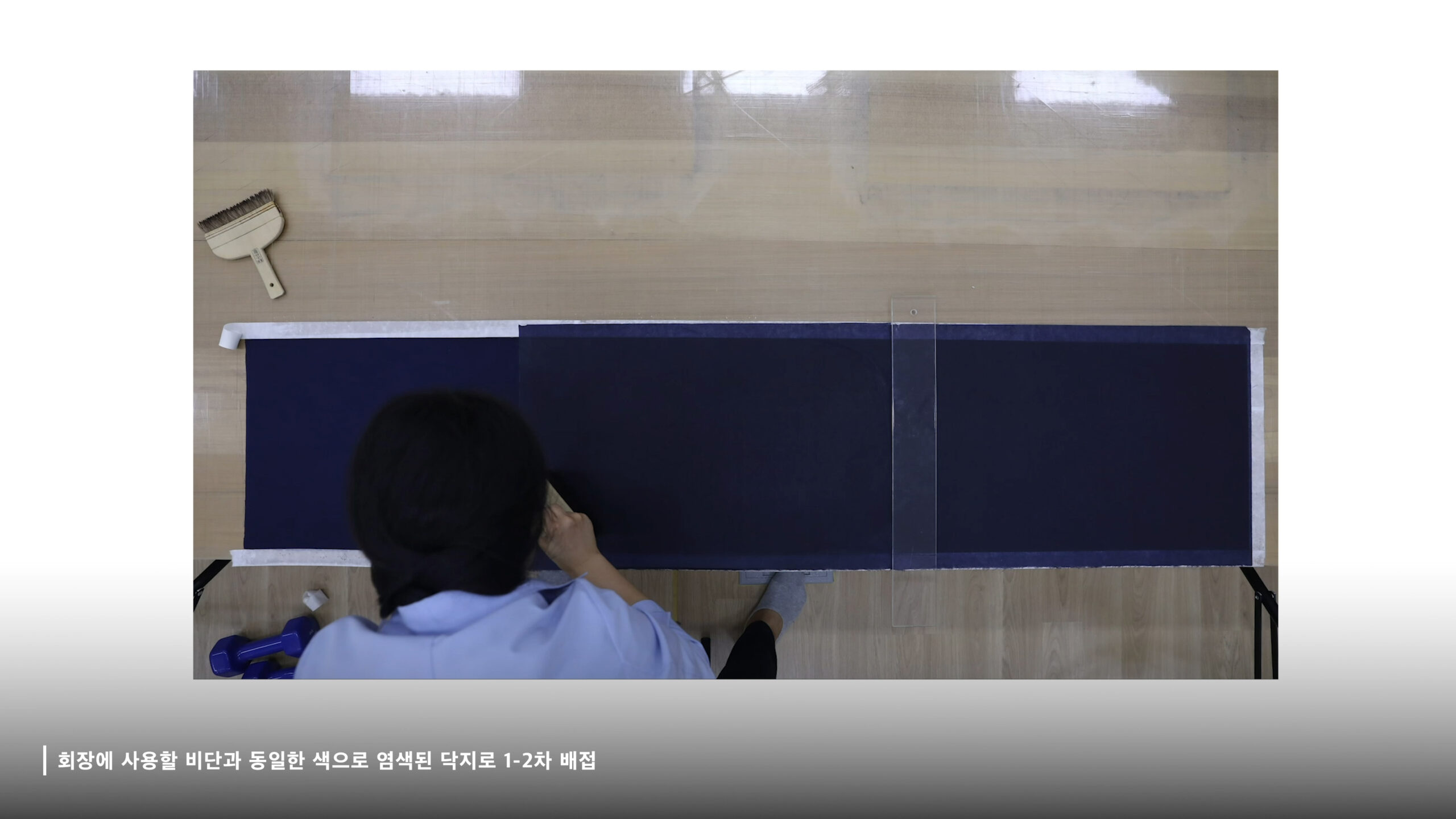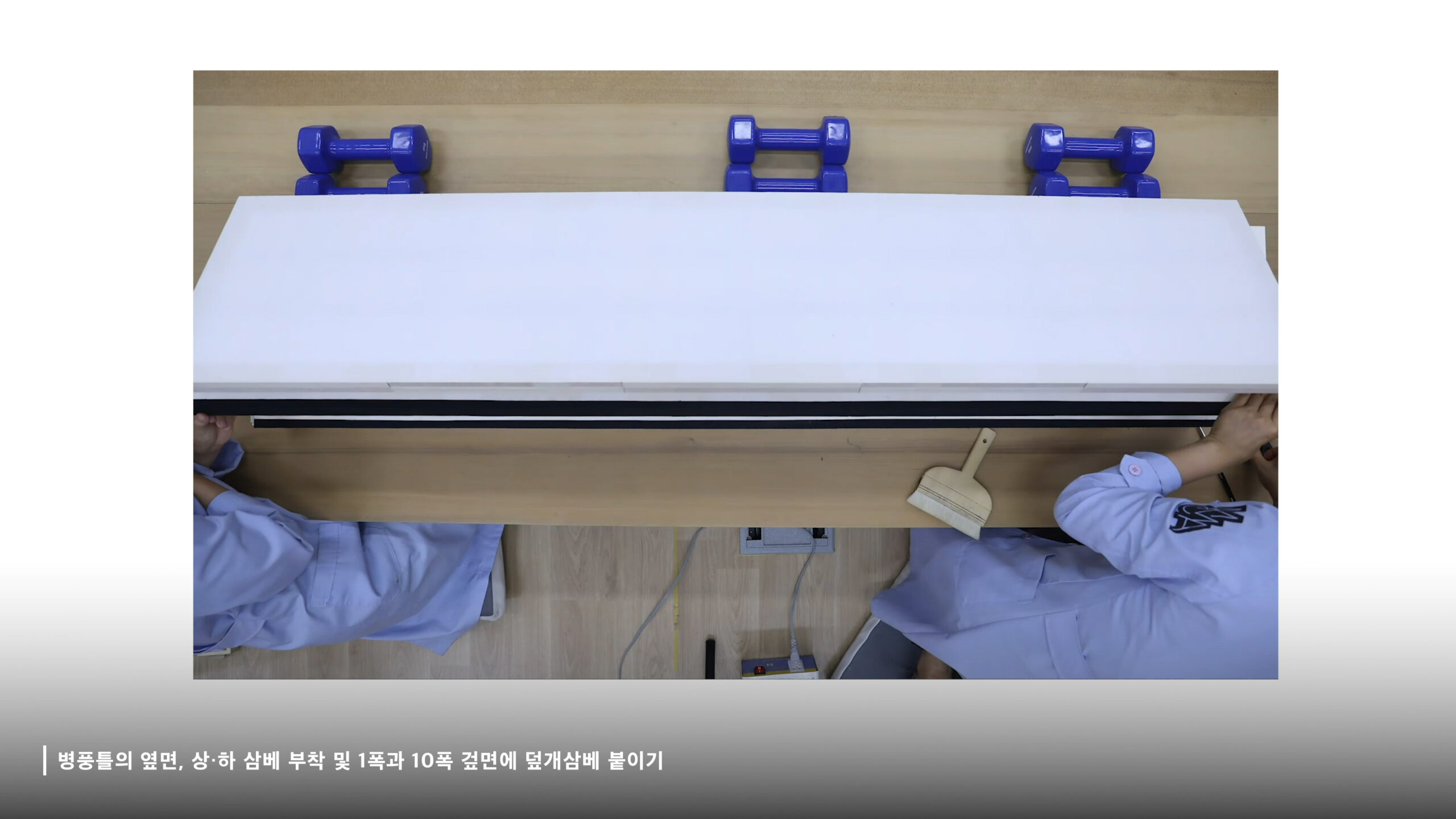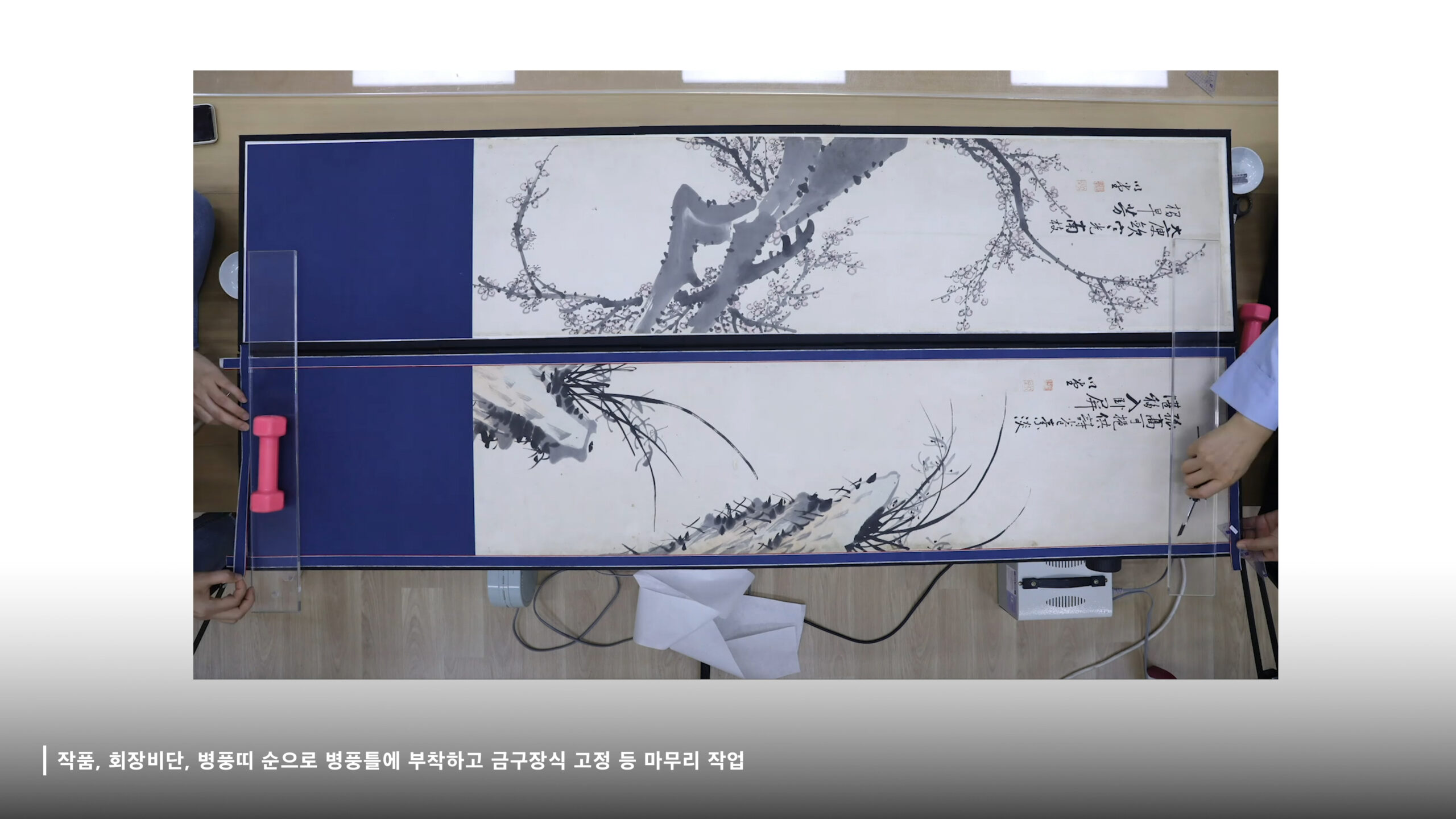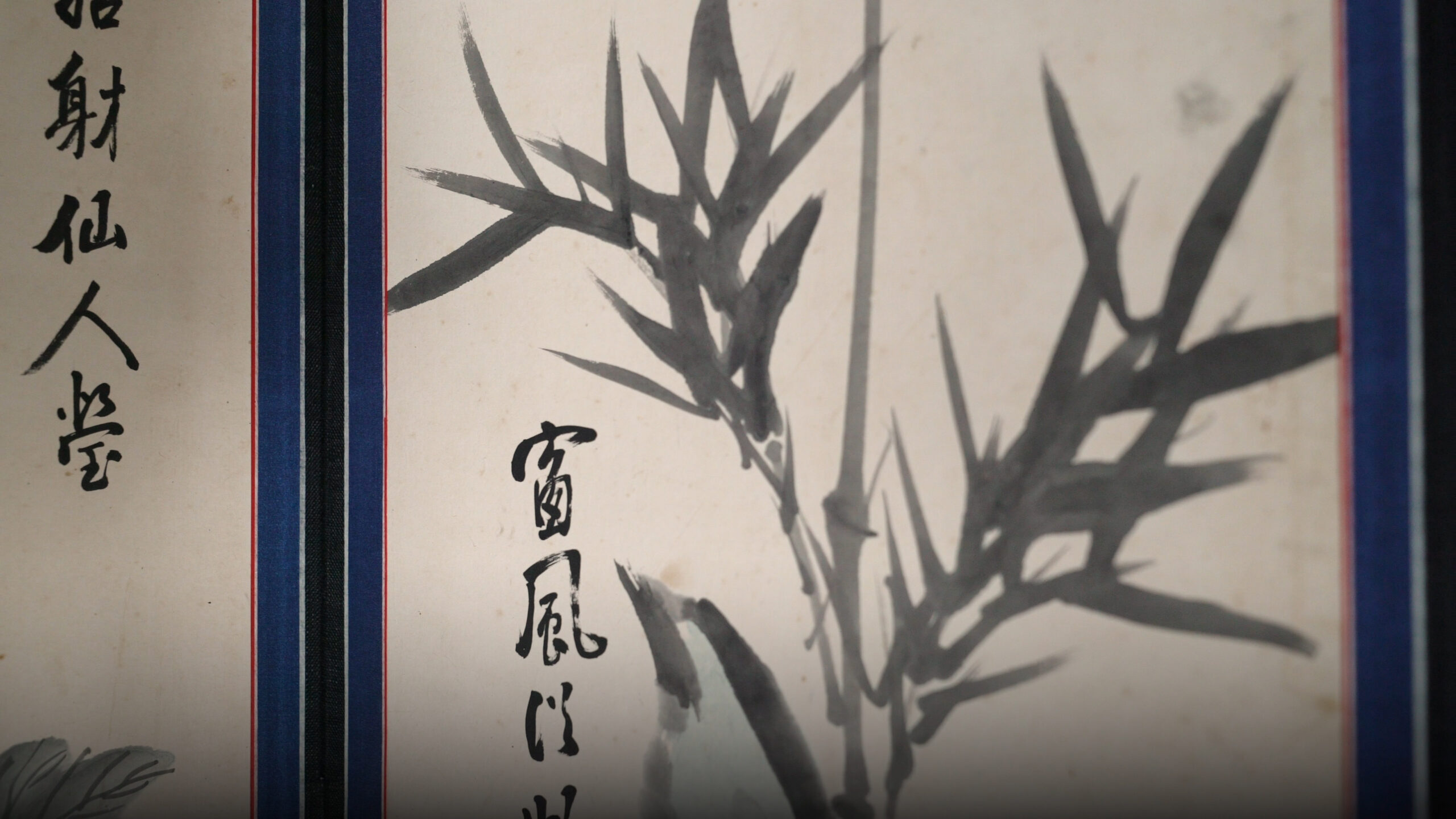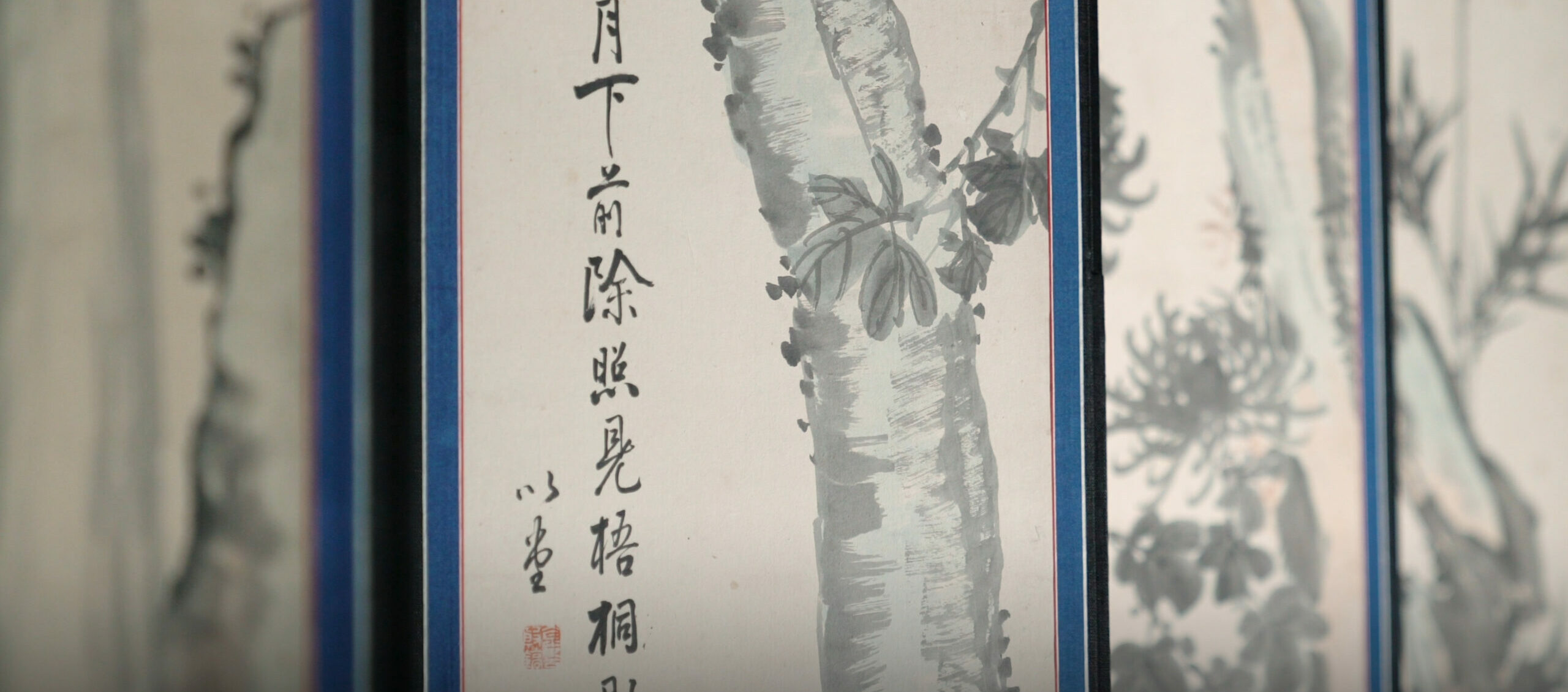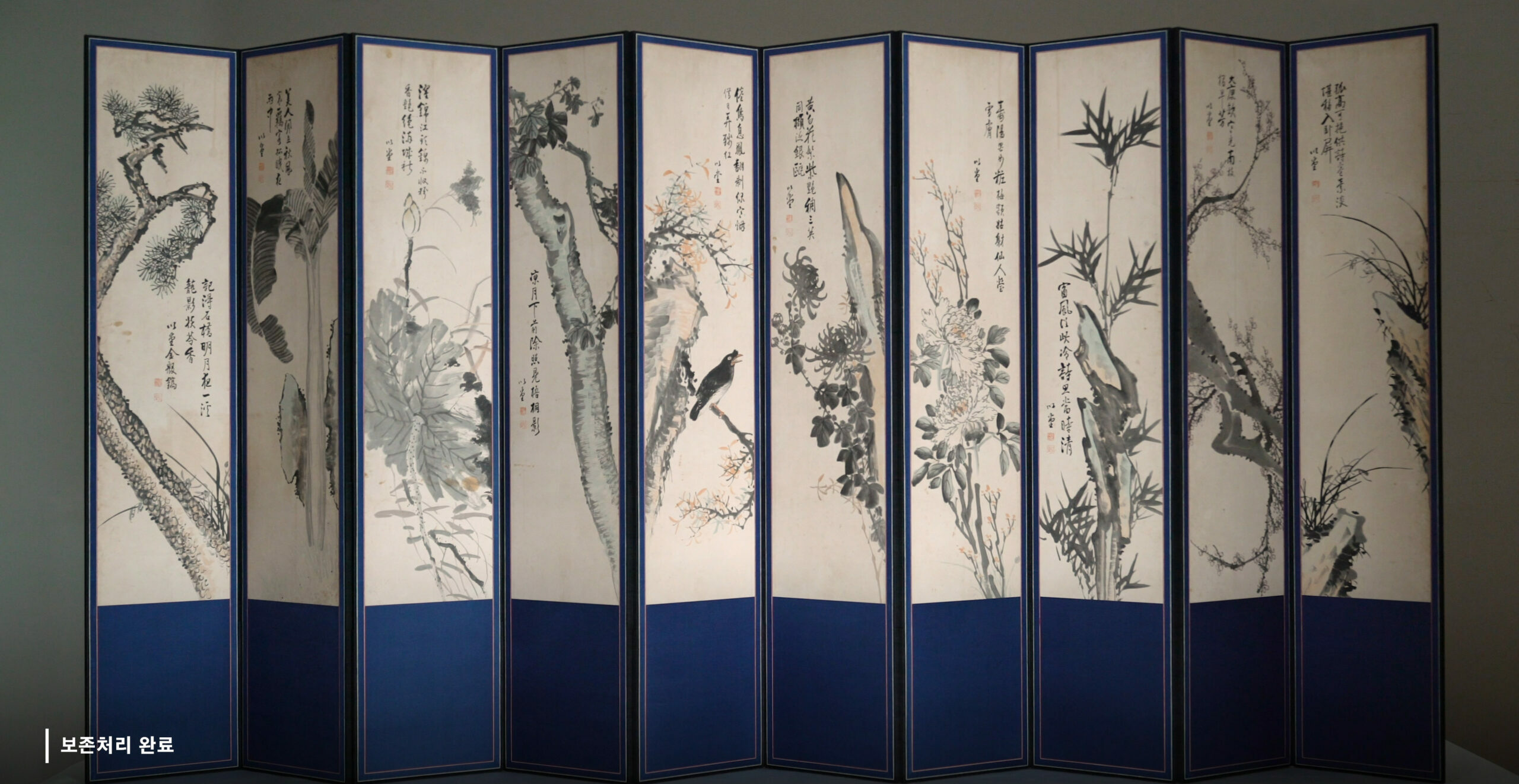작업 소개
57STUDIO는 국립현대미술관 청주관 개관을 앞두고, 보존과학실의 역할과 작업 과정을 소개하는 영상을 기획 및 제작하였습니다. 국립현대미술관 청주관은 동아시아 최초의 미술품 보존 전문 시설로, 국가미술품 종합 보존센터 및 과학감정기구로 자리매김하고자 합니다. 이에 따라, 보존과학실에서 이루어진 복원 과정을 영상으로 기록하여 관람객들이 보다 직관적으로 이해할 수 있도록 구성하였습니다.
본 영상은 김은호의 <화조영모도> 10곡 병풍 복원 과정을 중심으로, 사용된 보존 기법과 도구를 소개하며, 보존과학실이 수행하는 연구와 복원 작업의 중요성을 강조합니다. 특히, 국립현대미술관 보존과학실 지류실에서 이루어진 정밀한 복원 과정을 담아, 미술품의 보존과 복원이 어떤 과정을 거치는지를 시각적으로 전달합니다.
57STUDIO는 이번 영상을 통해 보존과학의 전문성을 효과적으로 구현하고, 미술품 복원의 과정을 보다 쉽게 이해할 수 있도록 구성하였습니다.
57STUDIO planned and produced a video introducing the role and processes of the Conservation Science Laboratory in preparation for the opening of the National Museum of Modern and Contemporary Art (MMCA) Cheongju. As the first specialized art conservation facility in East Asia, MMCA Cheongju aims to establish itself as a national art conservation center and scientific authentication institution. To enhance visitors’ understanding, 57STUDIO documented the restoration process in the Conservation Science Laboratory, offering a more intuitive perspective.
The video focuses on the restoration of Kim Eun-ho’s ten-panel folding screen Hwajoyeongmodo (Birds and Flowers of the Four Seasons), highlighting the conservation techniques and tools used while emphasizing the significance of the research and restoration efforts conducted in the Conservation Science Laboratory. In particular, it captures the precise restoration process carried out in the Paper Conservation Lab at MMCA, visually illustrating the stages involved in the preservation and restoration of artworks.
Through this project, 57STUDIO effectively conveys the expertise of conservation science and makes the artwork restoration process more accessible and engaging for the public.


